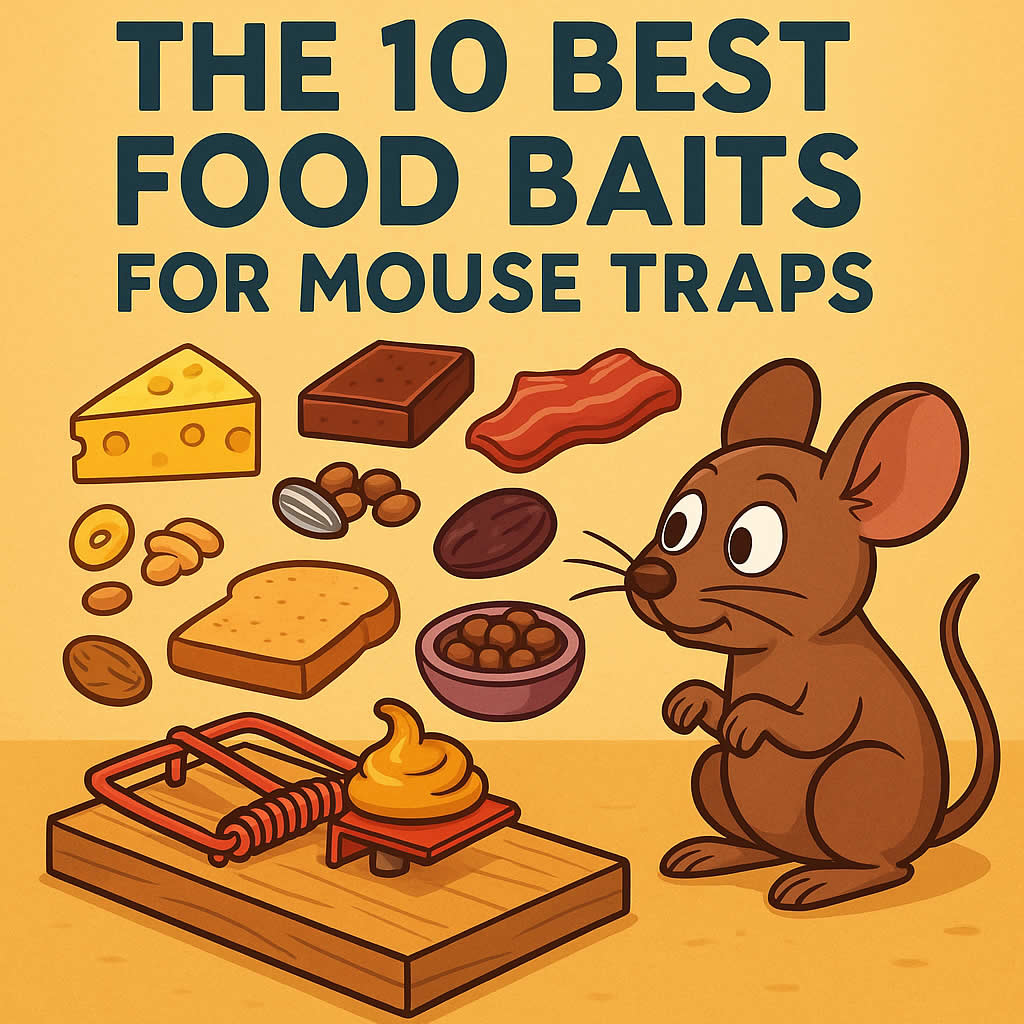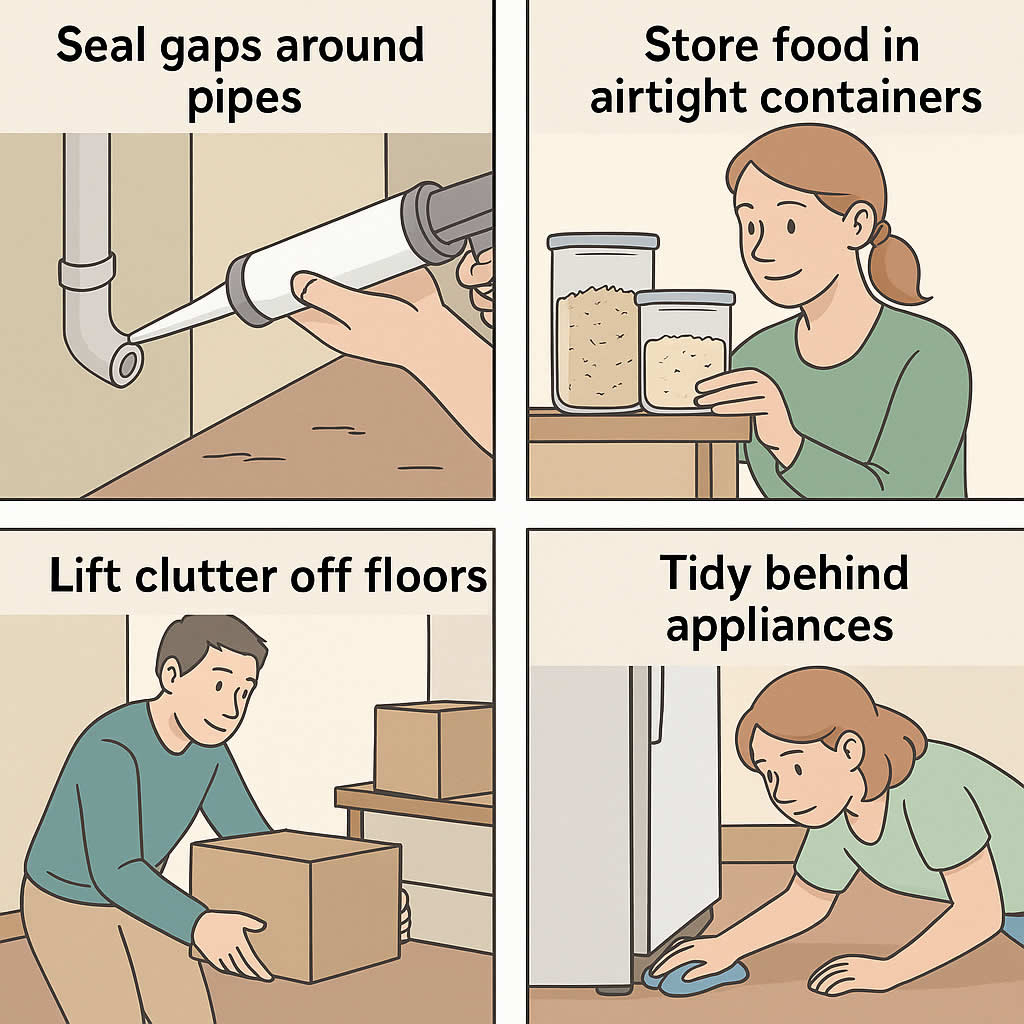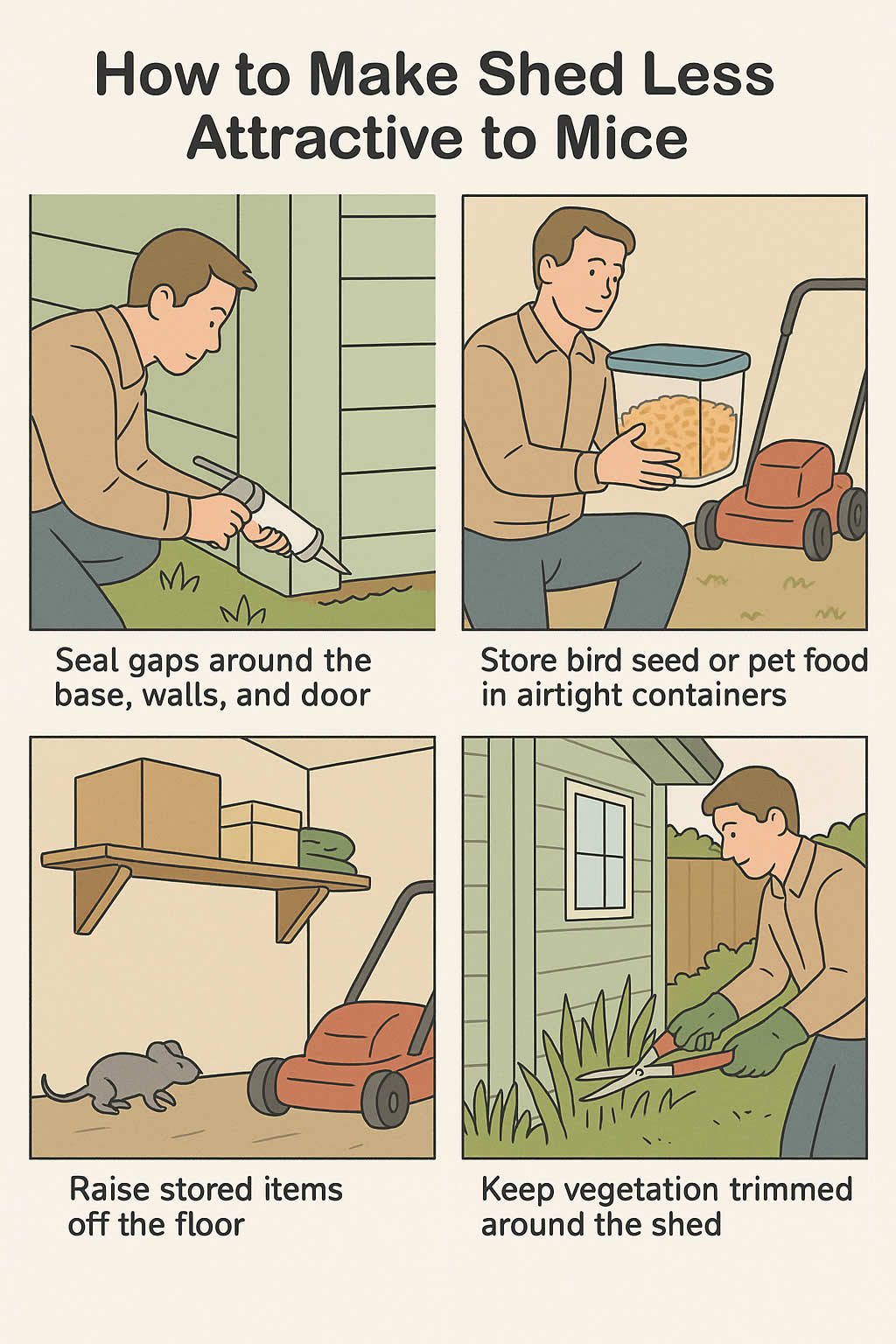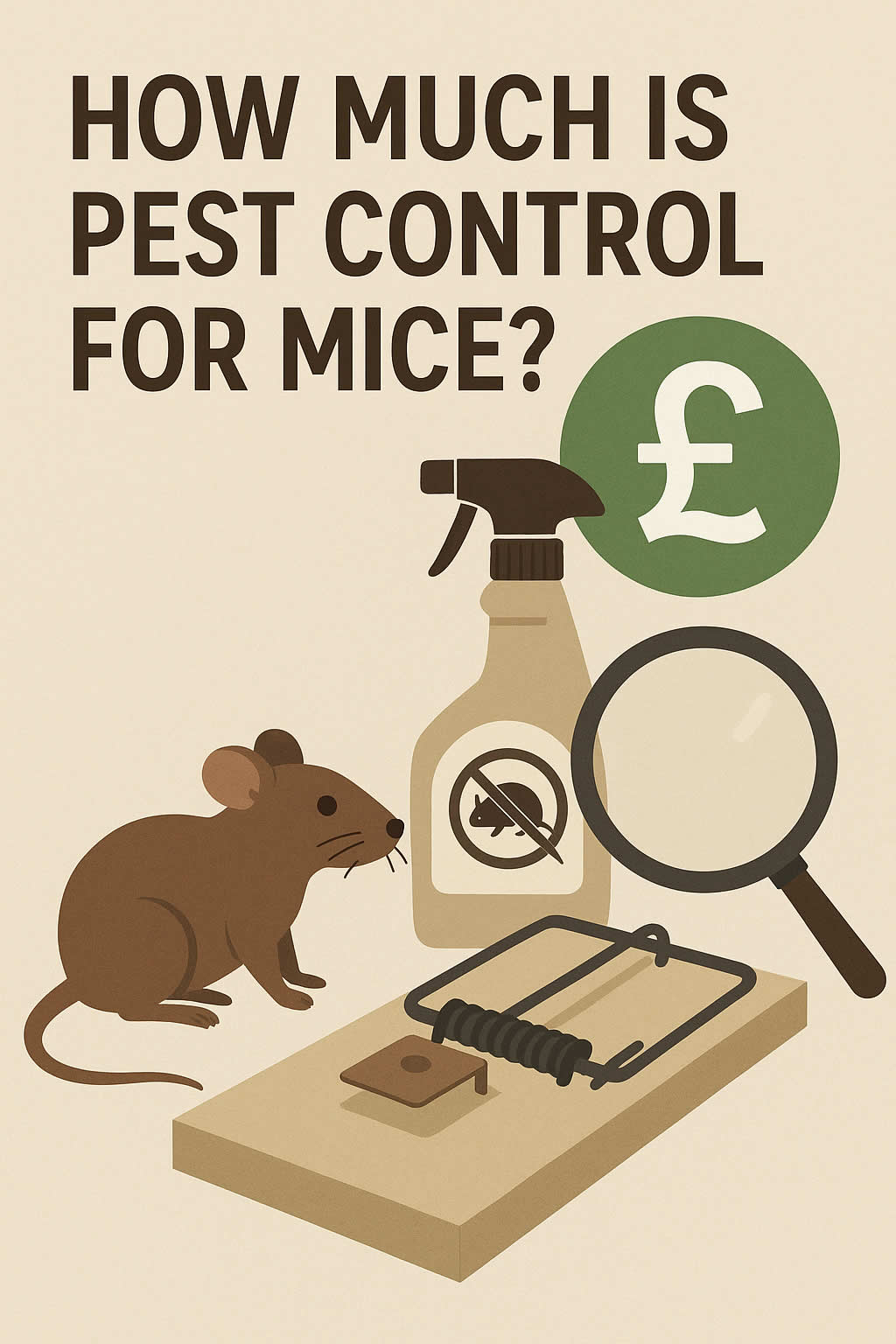Related Queries
ToggleWhen it comes to catching mice, the trap you choose is important, but the bait you use can make or break your success. Mice are cautious creatures, and while they’ll happily sneak into kitchens, pantries, and lofts in search of food, they aren’t drawn to just anything you put down. The right scent, taste, and texture can turn an ordinary trap into an irresistible lure.
This guide takes you through ten of the most effective food baits you can use in mouse traps. Each one has been chosen because mice find it hard to resist, and because it can be placed securely on a trap without too much effort. Whether you’re dealing with a single stray mouse or a bigger infestation, choosing the right bait will give you the best chance of success.
The Best Food Baits for Mouse Traps
Peanut Butter
Peanut butter is one of the most popular mouse baits for a reason. Its strong smell carries well, and its sticky texture makes it difficult for mice to grab without setting off the trap.
Tips: Use a pea-sized amount and press it into the bait holder so it’s firmly secured. Avoid overloading the trap, as too much bait can reduce sensitivity.
Chocolate
Mice are naturally drawn to sweet, rich foods. Chocolate is especially attractive thanks to its strong scent and high sugar content.
Tips: Break off a small piece of a chocolate bar or use a dab of chocolate spread. Dark chocolate tends to hold its aroma longer than milk chocolate.
Bacon
The smell of cooked bacon is almost irresistible to rodents. Its savoury, fatty scent carries well, and the chewy texture makes it hard to remove cleanly.
Tips: Use a small piece of cooked bacon, cooled to room temperature. Tie or press it securely to the trap to stop mice from stealing it.
Seeds and Nuts
Seeds and nuts are part of a mouse’s natural diet, making them an excellent choice. Sunflower seeds, walnuts, and hazelnuts work particularly well.
Tips: Crack nuts slightly to release their scent. Place only one or two seeds at a time so they can’t be taken without triggering the trap.
Cheese
The classic bait still works, though not as effectively as some others. Cheese has a strong smell, but hard cheese can be easy for mice to carry away.
Tips: Use a soft, smelly cheese like cheddar or brie. Press a small piece firmly onto the trap so it sticks.
Breakfast Cereals
Sweetened cereals appeal to mice because of their sugar and grain content. Cornflakes, oats, or small pieces of granola can be effective.
Tips: Crush cereal lightly so it releases more scent. Stick it to the trap with a drop of peanut butter for extra hold.
Pet Food
Dry cat and dog food often contains strong-smelling proteins that attract mice. This can be especially useful if you already have bags of pet food in the house, as mice may already be sniffing it out.
Tips: Use small kibble pieces, and secure them with a smear of peanut butter to stop them rolling off the trap.
Bread
Mice are scavengers, and bread is often one of the first foods they’ll seek out in kitchens. Fresh bread, especially when slightly toasted, has a strong scent that draws them in.
Tips: Press a small piece of bread onto the trap and allow it to dry slightly, which makes it harder for mice to remove cleanly.
Dried Fruit
Raisins, sultanas, and cranberries are sweet, chewy, and packed with aroma. Mice are naturally attracted to their sugary scent and sticky texture.
Tips: Soak dried fruit briefly in water to enhance the smell, then press it onto the trap so it holds firmly.
Honey or Syrup
Sticky and sweet, honey and syrup are highly attractive to mice. Their texture makes them difficult to eat without springing the trap.
Tips: Apply a small drop directly to the bait holder. Avoid using too much, as it can make the trap messy and harder to clean.
Quick Comparison of the Best Food Baits for Mouse Traps
Before moving on, here’s a quick chart to help you compare the most effective food baits based on scent, stickiness, ease of use, and overall success rate.
| Food Bait | Scent Strength | Stickiness / Hold | Ease of Use | Overall Effectiveness |
| Peanut Butter | Strong nutty aroma | Very sticky, hard to steal | Easy to apply | ★★★★★ |
| Chocolate | Sweet, rich scent | Moderate (firm piece needed) | Simple, but can melt | ★★★★☆ |
| Bacon | Savoury, powerful smell | Chewy, but must be secured | Slightly messy | ★★★★☆ |
| Seeds & Nuts | Natural aroma, mild to strong | Low (can be carried off) | Easy, no prep | ★★★☆☆ |
| Cheese | Distinct smell (soft cheese best) | Moderate if soft | Can dry out quickly | ★★★☆☆ |
| Breakfast Cereal | Sweet, grainy aroma | Low unless stuck with PB | Crumbly, needs pairing | ★★★☆☆ |
| Pet Food | Meaty scent, strong | Low unless secured | Convenient if at home | ★★★☆☆ |
| Bread | Familiar scent | Weak unless dried onto trap | Easy, but perishable | ★★☆☆☆ |
| Dried Fruit | Sweet, fruity aroma | Sticky and chewy | Easy, long-lasting | ★★★★☆ |
| Honey / Syrup | Very strong sweetness | Extremely sticky | Messy, hard to clean | ★★★★☆ |
What to Try if These Don’t Work
If you’ve tried several food baits without success, it may not be the bait that’s the problem. Mice can be cautious, especially if they’ve seen or smelled traps before. Placement is key — traps should be set along walls, behind appliances, or near droppings where mice are already active. Using too much bait can also backfire, as it allows mice to nibble without triggering the mechanism.
If food baits don’t work, you can try alternatives such as commercial lures designed specifically for mice, nesting materials like cotton or string, or even strongly scented treats such as vanilla essence or nut oils.
When to Seek Professional Help
If traps and food baits aren’t reducing the problem, the infestation may be larger than you realise. Mice breed rapidly, and what starts as one or two can quickly become dozens. At this stage, setting traps alone may not be enough. Professional pest control services have the expertise, equipment, and treatments needed to remove mice safely and thoroughly.
Frequently Asked Questions
What food do mice like most?
Mice are opportunistic feeders, but they’re especially drawn to foods that are high in fat, sugar, and protein. Peanut butter is often considered the best bait because of its strong smell and sticky texture, which makes it hard for mice to grab without triggering the trap.
Why don’t mice go for my traps?
If your traps aren’t working, it could be due to placement or baiting technique rather than the bait itself. Mice usually travel along walls and avoid open spaces, so traps should be placed close to where droppings or gnaw marks are found. Using too much bait can also allow mice to nibble without setting off the trap.
Are some foods better for long-term use than others?
Yes. Perishable foods like bread or soft cheese can dry out quickly and lose their appeal, while dried fruit, seeds, and peanut butter stay attractive for longer. If you’re setting multiple traps, it’s best to use longer-lasting options to save time on rebaiting.
Can mice become trap-shy?
They can. If a mouse narrowly escapes a trap or detects human scent on it, it may become cautious. To avoid this, handle traps with gloves, vary the baits you use, and move traps to different spots along their routes.
Our Final Say!
The food you choose for your traps makes a big difference to whether mice take the bait. From peanut butter and chocolate to bacon and dried fruit, the best baits are those with strong scents, appealing flavours, and textures that are tricky for mice to remove.
By experimenting with the options above, you’ll greatly improve your chances of catching mice quickly. But if DIY trapping doesn’t work or the problem keeps getting worse, it’s always wise to reach out to local pest control professionals.
At How To Pest Control, we share tips, guides, and product reviews to help you tackle mouse problems on your own. And if you’d rather not deal with it yourself, we can connect you with trusted local experts who will sort it out for you.













